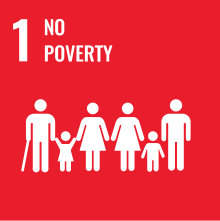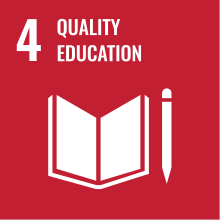Leave no one behind
The resilience of member states of the UN and local/regional communities differs spatially and it could get worse or improve over time. We start in this learning resource with an UN statistics that explain the objective of "Leaving no one behind" in the health sector. After finishing the learning resource you should be able to apply your knowledge to other Sustainable Development Goals.



Skilled Health Personell
editThe following topic addresses the health service delivery and analyzes households and the possibility to attend skilled health personnel if women give birth to baby. This learning resource look as introduction on the spatial diversity of access to resources[2].
Southern Asia / Sub-saharan Africa
editLooking at Southern Asia or sub-Saharan Africa this is visible e.g. in area of health service delivery.
- Fewer than 30% of births among women in the poorest 20% of households are attended by skilled health personnel or have access to a sufficient health care service,
- compared to over 80% of births in the richest 20% of households[2].
Global Access linked to Poverty
editIf we consider the attendance to skilled health personnel globally in 2015,
- 43% of births in the richest 20% of households attended globally skilled health personnel and
- among the poorest 20% of poorest households 89 attended globally skilled health personnel[2].
Learning Tasks
edit- (Sustainable Development Goals) Severe income inequality affects other aspects of sustainable development. Look at Sustainable Development Goals and identify the impact of poverty on the options to contribute to Sustainability. Look for scientific analysis and results or survey data from developing countries that show the correlation of income and the attendance to the schooling. Explain how this educational aspect affects the economic possibilities, health and protection of their environment.
- (Resilience) How does education in general add to resilience of societies and to access to resources?
- (Digital Devide) How is the digital devide connected to the objective not to leave anyone behind?
- (United Nations Development Programme - UNDP) Analyse the documents of the United Nations Development Programme "What does it mean to leave no one behind?"[3]. What are the main 5 risk factors in the discussion paper and explain the relevance to not leaving anyone behind.
- (Wikiversity) Explain how Wikiversity itself can be used to leave no one behind for Capacity Building, Learning and the application of Open Educational Resources or the Open Community Approach in general.
References
edit- ↑ 1.0 1.1 1.2 UN-Guidelines for Use of SDG logo and the 17 SDG icons (2016/10) - http://www.un.org/sustainabledevelopment/wp-content/uploads/2016/10/UN-Guidelines-for-Use-of-SDG-logo-and-17-icons.October-2016.pdf
- ↑ 2.0 2.1 2.2 Leaving No One Behind - 2016 UN Report on Sustainable Development Goals - https://unstats.un.org/sdgs/report/2016/leaving-no-one-behind (accessed 2018/11/13)
- ↑ What does it mean to leave no one behind? - United Nations Development Programme - http://www.undp.org/content/undp/en/home/librarypage/poverty-reduction/what-does-it-mean-to-leave-no-one-behind-.html - (accessed 2018/11/06)